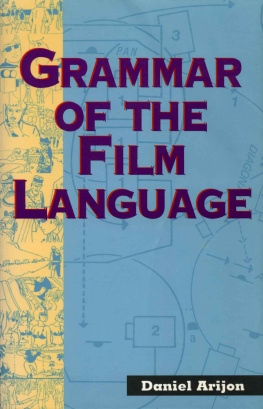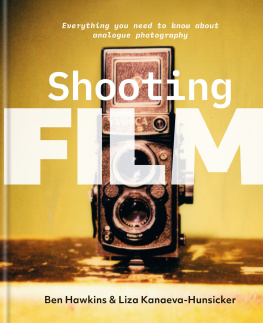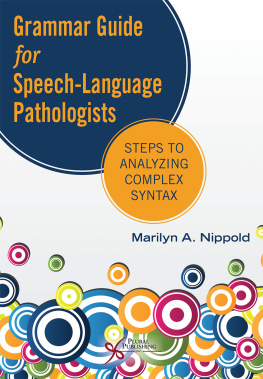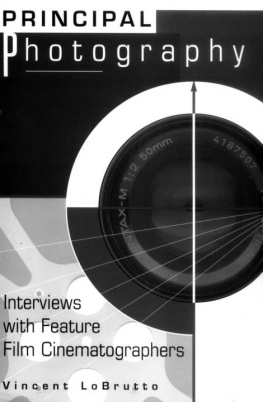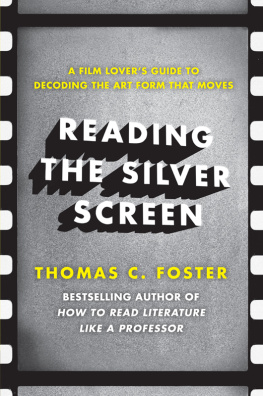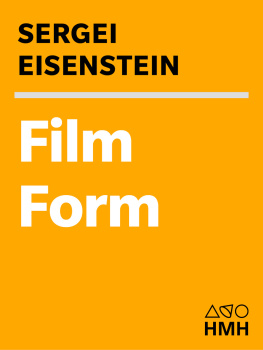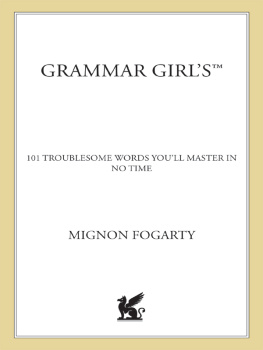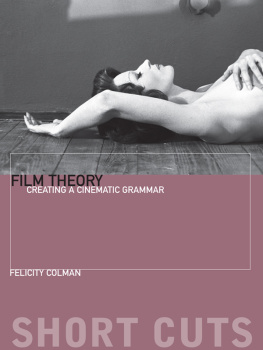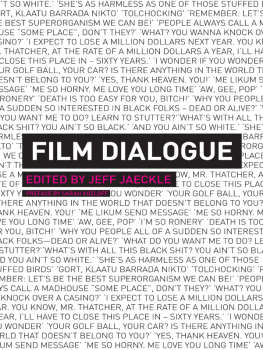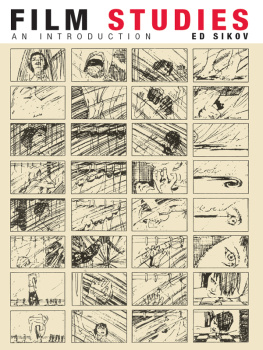The hardcover edition of this book has enjoyed a successful life during the past fifteen years under the imprint of Focal Press. It saw several reprints in English and translations were published in Japanese, French, Serbo-Croate, and Spanish. Ive had the pleasure of seeing it used as a textbook in several film and television schools around the world. That kind of reception to my work has made my modest contribution to the understanding of the visual grammar of the moving image a worthwhile effort.
Now, Silman-James Press grants my work an extended life in this paperback edition. I hope that their effort will benefit all those interested in pursuing a career in the communication wonder of this age: the moving image in all its diffuse variantsfilm, tape, disk, and whatever may come in the future.
The true and tested rules of visual language outlined in this book will remain constant for a long time to come. You can be sure of that. As I said in the hardcover edition, the greatest movies of our age are still unmade. Let us try to be the ones who will make them. There is an expanding audience all over the world waiting for these stories.
INTRODUCTION
There are so many books on film making, that one is tempted to ask why there should be yet another. And why this one? The author feels, and this conviction stems from his own case histories, that for the last twenty years there has not been a book on the market that chronicles the developments in the narrative techniques of the cinema in a practical way.
A young person not lucky enough to be associated with good film makers, usually seeks the information he needs in books. He will find many books that discuss various theories about film, or contain criticism and interviews or essays. A highly complicated endeavour such as film making, requires the effort of many specialists, some of whom have written good technical books. But one sector of the subject has been neglected in recent yearswhich may be termed the organizing of images for their projection on a screen. Existing books on the subject are outdated or incomplete. And few of them have any tangible practical information that the budding film maker can assimilate and apply in his own work. The aim of this book is to fill the gap that has opened since those works were originally written.
The cinema has evolved at a wondrous pace, especially in its narrative forms. With new lightweight cameras, portable recorders and other technical developments on the one hand, and economic hire charges for good equipment, cheap raw stock and processing on the other, the possibility of making a professional full length low-budget film is almost within the reach o f everyone. I f the dream of the former generation was to write the great novel of their time, the aim of the younger generation seems to be the making of very good films. To them, and the many other persons who are increasingly turning to film as a medium of expression, this book is mainly dedicated. It is designed to shorten the years of apprenticeship and avoid the uncertain task of collecting scraps of information here and there and to assemble the basic rules of film narration. You will not find theories here, but facts, tested and proven over a long period by diverse film makers all over the world, which can be readily applied to any film project you might be considering.
Work on this book has taken up nearly twelve years alongside with my own career in film making. I hope that my humble effort will also help anyone who, like the author, began their career or is about to begin it in countries or areas where an industry that absorbs new blood does not exist.
Age, nationality or background does not matter. What is important is that you have something to say that can, and must, be expressed through the film medium in your own way and in your own terms. The greatest movies of our age are still unmade. Let us try to be the ones who will make them.
Daniel Arijon
Montevideo, Uruguay, 1975
ACKNOWLEDGEMENTS
This book would not have been possible without the help of Carrillon Films del Uruguay , where I found unlimited support for my project, and where moviolas and projectors were freely put at my disposal over a number of years.
Luis Elbert and Nelson Pita located and obtained many of the film prints used by the author in his research. Manuel Martinez Carril of Cinemateca Uruguaya also helped provide film prints for viewing and analysis expressly for this manuscript. The late Jorge Calasso, Miss Elena Iuracevich, Raul Fernandez Montans, and last but not least, Milton Cea, made invaluable contributions and suggestions. To all of them, my heartiest thanks.
Daniel Arijon
This book is dedicated to Delmer Lawrence Daves who ignited the spark and to Hector Mario Raimondo Souto who propelled my efforts into reality
1
FILM LANGUAGE AS A SYSTEM OF VISUAL COMMUNICATION
Across the open door of my office, I can see the editing equipment we have been using for several weeks in putting together our last film. From my desk I can partially see the small screen of the editing machine. Now it is only a white rectangular spotlifeless, just a piece of coated glass. On a sudden impulse I rise and walk into that room. I stop at the door and survey it in a way I have never done before. The objects are familiarthe cans of film, the bins full of strips of celluloid, the scissors, the splicing machine. On small hooks hang numerous strips of film, some of only a few frames length, other of countless feet unreeling loosely into the bins.
I select one of the strips of film at random and thread it into the moviola. I pull some switches and the strip of film starts to move. On the small screen suddenly an image appears. We are inside a church, large, modern, ascetic. A girl, young and innocent, walks towards us. We follow her until another figure appears on the screen. It is an actor dressed in a dark spacesuit and wearing a strange and brilliant helmet. We only catch a glimpse of the lone glass eye on the projecting front of his helmet and there the shot ends. The small screen becomes blank again with only a flickering light shining beneath the glass.
What I have seen is just a fragment of a photographed reality. A reality that was carefully arranged and rehearsed in front of a movie camera. A similar process was registered on the other strips of film. Here, reality is broken down into little frames and here in the cutting room I stand, thinking about this aspect of my craft.
Those pieces of film were selected by me, recorded on film by a photographer, immersed in chemicals in a laboratory until the images were clearly visible and fixed on the celluloid base. And they are destined to be shadows, ungraspable, ever-changing patterns of light when projected on a screen in the moviola, the cinema theatre or a million television sets across a nation.
What had we been doing in that room for the last few weeks? We played with fragments o f recorded time, arranged shadows and sounds to convey a story, pursued some moments of truth, tried to communicate some feelings and reached for the clues that would grant those images the power to grasp the attention and emotions of an audience that will always remain anonymous to us.

